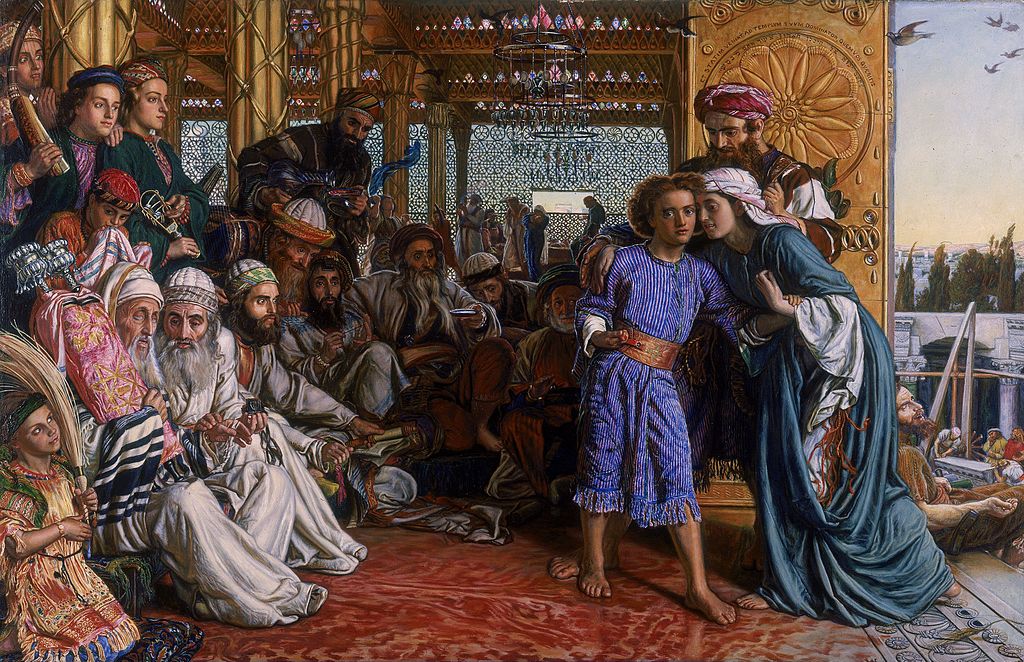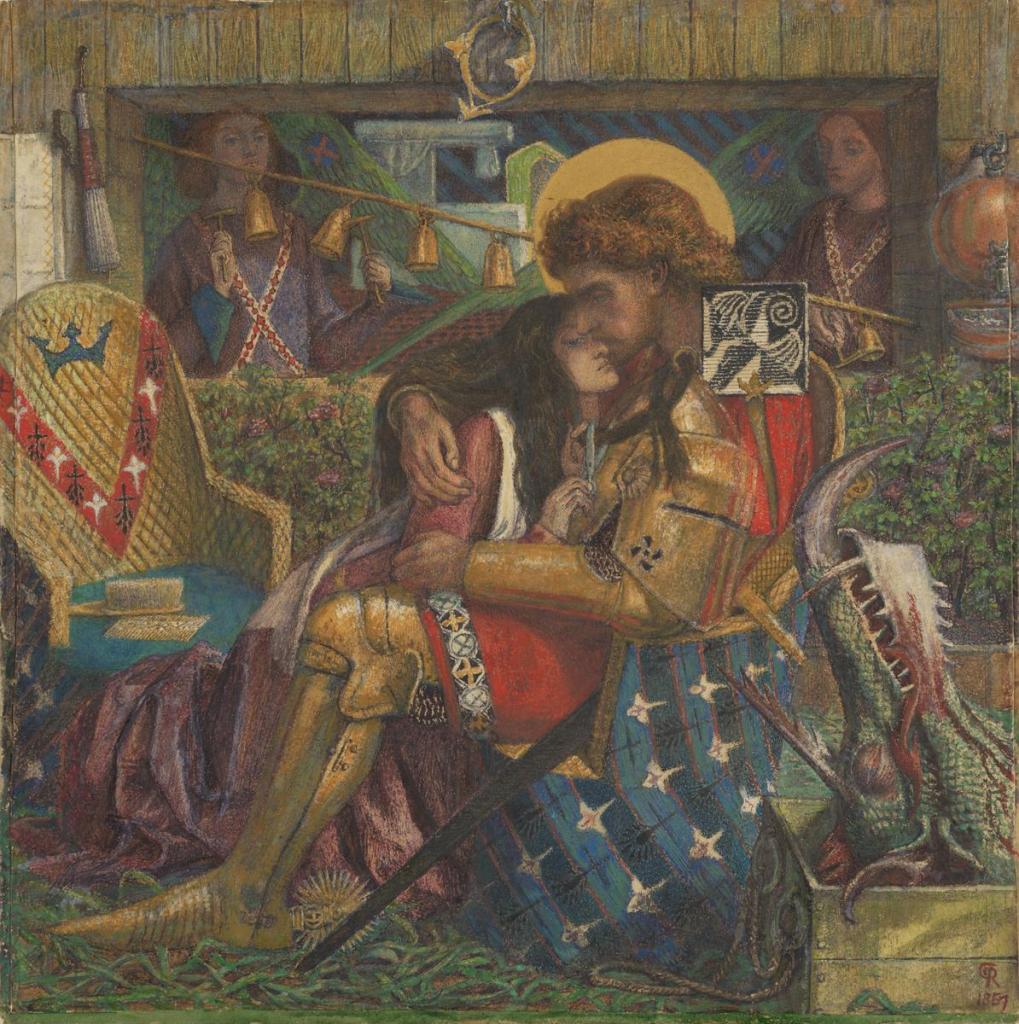Coda: when to set the Arthurian Nights
Writing the last couple of posts made me realize that there’s a bunch of similarities between the Arabian Nights stories and Arthurian legends:
– both are loose collections of stories bound together by a frame or core story;
– both had major popular revivals in the 19th century, based on important manuscript collections from about 500 years ago;
– both have some stories that are supposedly older than anyone can remember, with an oral tradition that allegedly predates the oldest written record;
– both contain stories that are self-consciously set in the distant past, compared with the “present” of their telling;
– but aside from some specific characters, that distant past setting is exactly like the storyteller’s present, like performing a Shakespeare play in modern dress.
It turns out they’re not unique in having this set of characteristics – you can say most of the same things about the Odyssey, Norse Mythology and the Bible.
And it struck me especially that, as readers, we tend to be bad at separating the explicit setting from the context of the stories’ recording – that mythical “long ago” when Arthur was king vs. the 15th century when Malory writes about him. That is, there’s a lot of handwringing about when the historical Arthur might have existed and whether it’s appropriate to dress his knights in plate armour, or whether the Arabian Nights are really set at the time of Harun al-Rashid or if they occupy some kind of Orientalist Unchanging Ahistoricist Fantasy Asia.
But considering them as literature, it doesn’t matter. The stories don’t care – they’re about personal temptations and overweening ambition and trusting to God/fate and the set dressing is strictly just set dressing.
But but but… all that said, there are remarkable coincidences of period: Harun’s Baghdad occupies the late 8th century, which is sorta vaguely Arthurian but more exactly it’s the time of Charlemagne, the king with Paladins and the Horn of Roland and so on. And the Syrian manuscript of the Nights is pretty much contemporary with Malory. And the 19th century revival tended to excite the same people: those Pre-Raphaelites who loved to paint the Lady of Shalott also loved Orientalist subjects. (By now we know William Morris was all over this stuff, right? His whole decorative arts career was like half Euro-medieval, half Indian prints)

If Arabia seems a long way from Chivalric Britain, it didn’t to 19th century British authors and artists. The disordered England of Walter Scott’s Ivanhoe depends on the absence of Richard the Lionheart, who was off defending Christendom from the Saracens in the Third Crusade, leaving wicked King John to usurp the kingdom (and those loyal royalist Cornish were supposedly ransoming Richard with “bezants,” or so they said a century later). Bringing the Crusades home to village scale, Ivanhoe teams up with Robin Hood and a disguised King Richard against John’s crony, the wicked Sheriff of Nottingham, whom we know is wicked because he stayed home rather than fighting with the Crusaders.

As is typical for Victorian medieval women, she’s making a tapestry. Or maybe embroidering. Women and cloth, weaving as female power. And the messenger disquiets her with a piece of decorated cloth, maybe something she made? Maybe Richard’s baldrick.
For another Anglo-Chivalric/middle Eastern mashup, Pre-Raphaelitist Dante Gabriel Rossetti liked to riff on the imperial, the patriotic, and the personal by painting himself in the guise of St. George, patron saint of England, together with his wife Elisabeth Siddell (or other paramours) as the Egyptian Princess Sabra, whom Richard Johnson had created to be St. George’s wife/reward in his Elizabethan-era retelling of the George-and-dragon myth, Seven Champions of Christendom (1596).

This Sabra doesn’t look much like Elizabeth Siddell, who is much more typically Pre-Raphaelite in the 1862 version, painted just before she overdosed on laudanum.
So there’s your Shining Armour Orient, right there – the East feminized, England her protector, etc. etc. There’s a 19th century Occidentalist gaze to hang beside the Orientalist one, too: the 1835 Arabic-language Boulaq recension of the Arabian Nights introduces post-Crusading Christians in the form of piratical Genoese villains, who capture and sell Muslims – which is a neat echo of that Orientalist cliche about Barbary Corsairs enslaving white women. (To get a sense of just how big a cliche this was and how much 19th century western Orientalist artists and viewing publics loved a bit of slave-erotica, check out this enormous and exhausting catalogue of pictures of odalisques and slave girls. NSFW in parts. None of them are actually pre-Raphaelite, though, as far as I can tell).
So what to do with all this? First, it’s interesting to note that the non-historical Islamic world of the 1001 Nights partners very neatly with the non-historical England of Arthurian romances: both sets of stories were being compiled at the same time and both regard their own times as tragically fallen compared with the earlier golden ages they choose to remember. During Malory’s life, Britain was being torn apart by the Wars of the Roses and he dreamed of a uniting Arthur, to heal its divisions. At the time of the Syrian Manuscript, the unifying Caliphate of Islam was a distant memory and Caliph Harun was an emblem of a lost purpose for the overall community of believers. In both story cycles the “present” landscape is a patchwork of petty kingdoms, robber knights and false courts… so it’s easy enough to imagine characters traveling from one to the other and maybe finding there the key to their own kingdom’s renaissance. Although maybe the least interesting approach is to throw in a lone lost wanderer, like Nasir in Robin of Sherwood. It might be better to invert the viewpoint and have your party be the foreign wanderers (fresh off the boat, to borrow Tekumel’s cliche) in the newly strange deserted forests of Albion – like in The 13th Warrior. If you want to mix in the 12th century Crusades but not from the usual jingoistic perspective, check out ibn Munqidh‘s memoir – and if you want to know how to get from Chretien de Troyes’s France to the Holy Land and back by way of Norman Sicily, there’s no better sourcebook that ibn Jubayr’s Travels. Personally I’d be tempted to mix up Antar with Arthur and start a picaresque comedy of errors.
Or do a points of light campaign across the known world, tied together by a quest for the Holy Grail or a lost Excalibur. Grail mythologies have long toyed with the idea of a Templar network linking East and West, so your Arthurian Grail Quest could go… well, at least as far east as Persia – maybe Alamut, with a stop-off at Ararat to tangle with antediluvian dinosaurs or djinn. If you go with an 8th century Charlemagne/Harun axis, you could run all the way out to Talas to fight or trade with T’ang Dynasty China and pick up some of their high tech printed paper, prophetic fortune-telling cards, and automata.
Another approach would be to run with the sheer variety of the stories – Arthurists tend to emphasize a unity to the corpus but it’s really very varied, with phantom islands and faerie kingdoms and strange visions in the mists. From the Red Knight of the North and his parody Camelot to the lost lands of Lyonesse, Ys, and St Brendan’s Isle, there’s plenty of room for different interpretations of Chivalry, politics, and even geography. Add in the meddling of Arabian Nights djinn and scheming witch-princesses, Mount Qaf with its underground mountain chains and ibn Majid‘s world map with a hollow pole and you can have your knights explore (or pop up from) tunnels through any inconvenient genre space in the known or mythic worlds. Give the players al Idrisi’s map of the world and let them deduce where the hex boundaries are. To really mix things up, locate either the Arthurian or Arabian world inside a djinni’s brass jar, so that one map can travel around the other, making impossible trouble and swallowing up whole towns along the way.
So far I’ve only been messing with the set dressing, rather than really getting my teeth into the thematic cores of the two story-cycles. I’ll be honest, I have a harder time imagining either Arthurian prophecy or the Arabian Nights’s humble fatalism as suitable material for building RPGs around. Man’s helplessness in the face of fate and/or God’s plan can make for good stories with surprising endings, but how do you make them interactive? What handles do they offer players to grasp, to make their own destinies?
And most of my ideas involve keeping the two setting flavours somewhat separate, or seeing how they mess each other up, rather than making a synthesis out of them. Still, with a slight reskin, they can definitely be made to play well together – imagine a story where a bold princess is imprisoned by her evil father, the masked vizier of a hidden sultan. Fate draws her toward a trusted old servant, who happens to be secretly raising the Once and Future King, her brother. And the only way she can communicate her peril is through two unprepossessing servants, one a dwarf, the other a pompous halfwit. It turns out both the Arthurian and Arabian Nights romances have plenty of stories for a family drama like that, requiring princess rescue and the destruction of the evildoer’s fortress.
You can probably even come up with some spurious scientific-sounding jibber jabber to justify a flying carpet race through the halls of the Sultan’s palace, to find and shatter that one vulnerable jar that contains his heart.

